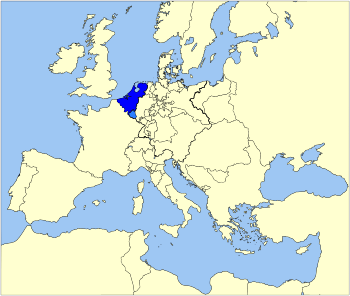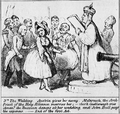United Kingdom of the Netherlands facts for kids
Quick facts for kids
Kingdom of the Netherlands
Koninkrijk der Nederlanden
Royaume des Belgiques |
|||||||||||||||
|---|---|---|---|---|---|---|---|---|---|---|---|---|---|---|---|
| 1815–1839 | |||||||||||||||
|
Motto: Je maintiendrai
"I will maintain" |
|||||||||||||||
|
Anthem: Wien Neêrlands Bloed
"Those in whom Dutch blood" |
|||||||||||||||

Map of the United Kingdom of the Netherlands in 1815
|
|||||||||||||||
| Capital | Amsterdam and Brussels | ||||||||||||||
| Common languages | Dutch, French | ||||||||||||||
| Religion | Protestant, Roman Catholic | ||||||||||||||
| Government | Constitutional monarchy | ||||||||||||||
| King | |||||||||||||||
|
• 1815–1839
|
William I | ||||||||||||||
| Legislature | States-General | ||||||||||||||
| Senate | |||||||||||||||
| House of Representatives | |||||||||||||||
| Historical era | Early modern period | ||||||||||||||
| 15 March 1815 | |||||||||||||||
|
• Constitution adopted
|
24 August 1815 | ||||||||||||||
| 25 August 1830 | |||||||||||||||
| 19 April 1839 | |||||||||||||||
| Currency | Dutch guilder | ||||||||||||||
| ISO 3166 code | NL | ||||||||||||||
|
|||||||||||||||
The United Kingdom of the Netherlands was a country in Europe that existed from 1815 to 1839. It was officially called the Kingdom of the Netherlands. This country was formed after the fall of the First French Empire. It included what is now the Netherlands, Belgium, and Luxembourg.
The new kingdom was created to be a stronger state. It was meant to be a buffer against France. The House of Orange-Nassau ruled the country. Its first king was William I.
Contents
How the Kingdom Was Formed
The Congress of Vienna (1815)
After Napoleon Bonaparte was defeated, European leaders met. This meeting was called the Congress of Vienna. They wanted to redraw the map of Europe. They decided to combine the former Dutch Republic (north) with the Austrian Netherlands (south). They also added the Prince-Bishopric of Liège. This created the United Kingdom of the Netherlands.
A New Constitution
On August 24, 1815, a new constitution was adopted. This set up a Constitutional monarchy. This meant the king shared power with a parliament. The parliament was called the States-General. It had two parts: the Senate and the House of Representatives.
The Belgian Revolution (1830)
The United Kingdom of the Netherlands did not last long. People in the southern parts (modern-day Belgium) were unhappy. They felt their language and religion were not respected. Most people in the south spoke French and were Catholic. The north was mostly Dutch-speaking and Protestant.
Reasons for the Uprising
- Language differences: The government tried to make Dutch the main language.
- Religious differences: The Catholic south felt controlled by the Protestant north.
- Political power: People in the south felt they had less say in the government.
- Economic issues: Some felt the north benefited more from trade.
The Uprising Begins
The Belgian Revolution started on August 25, 1830. People in Brussels began to protest. Fighting broke out between Belgian rebels and Dutch troops. King William I tried to stop the rebellion. But the rebels were strong.
The End of the Kingdom (1839)
King William I did not want to accept Belgium's independence. He fought for several years. But other European powers got involved. They wanted peace and stability in Europe.
The Treaty of London
Finally, in 1839, King William I signed the Treaty of London. This treaty officially recognized Belgium as an independent country. It also set the borders between the Netherlands and Belgium. This marked the official end of the United Kingdom of the Netherlands. Most of its northern part is still the Kingdom of the Netherlands today.
Images for kids
-
A British cartoon, satirising the "wedding" of Belgium and the Netherlands at the Congress of Vienna
-
Dutch troops in the Flemish town of Dendermonde in 1820
See also
 In Spanish: Reino Unido de los Países Bajos para niños
In Spanish: Reino Unido de los Países Bajos para niños







